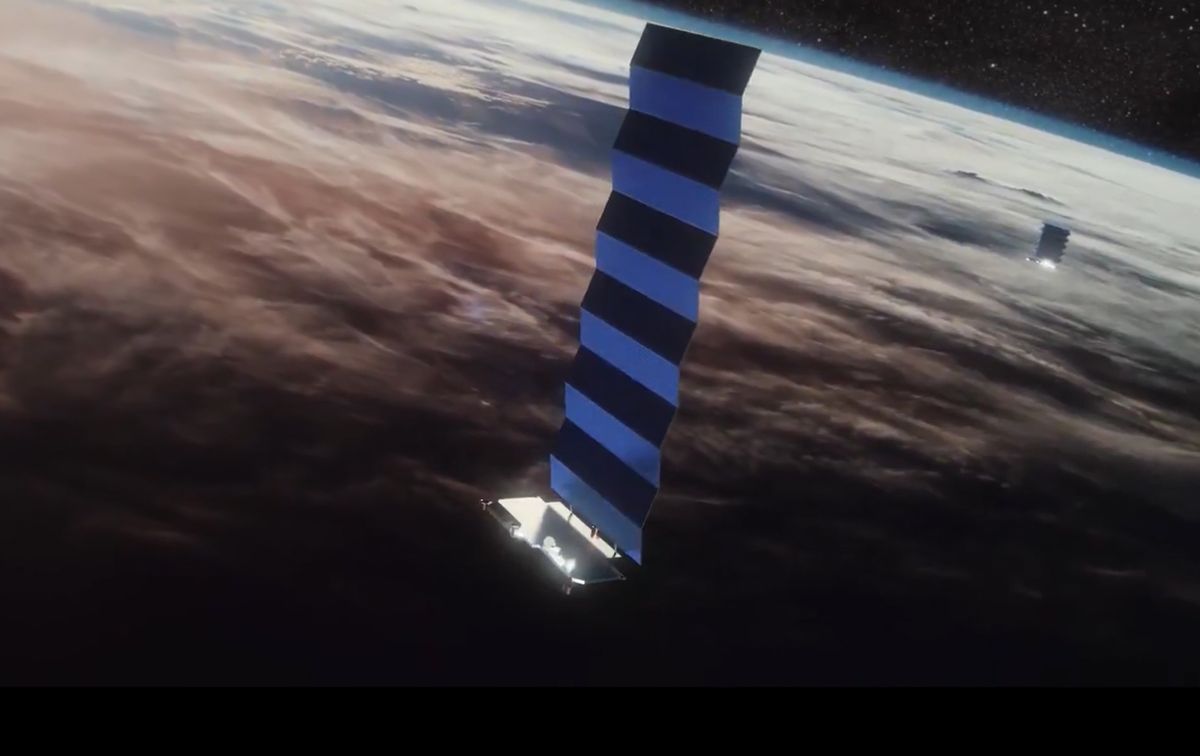
Elon Musk’s SpaceX will lose 40 Starlink satellites to a geomagnetic storm as solar activity ramps up. But does this spell disaster for the future of satellites in space?
On Tuesday (Feb. 8), SpaceX revealed that likely 40 of its 49 newest Starlink satellites that launched last Thursday (Feb. 3) were affected by a geomagnetic storm on Friday. The storm increased the density in Earth’s atmosphere, increasing drag on the satellites as they were released and attempting an insertion phase into orbit. This drag kept the satellites from entering orbit and they will now burn up in our atmosphere.
“And that is a drag,” Bill Murtagh, the program coordinator at NOAA’s (National Oceanic and Atmospheric Administration) Space Weather Prediction Center told Space.com.
While the storm itself “was by no means a big event,” Murtagh added, it was “just the wrong time.”
Related: The sun’s wrath: Here’s the worst solar storms in history
More storms coming
While this event essentially boils down to unfortunate timing, that doesn’t mean that space weather doesn’t pose a risk to technology in space.
“Space weather affects satellites in different ways,” Murtagh said. “We can have energetic particles that will penetrate your satellite and cause single event upsets or single event effects. Or it can create a charging environment or a static discharge can occur and that can be very problematic to satellites.”
And these risks could grow in the next few years as we approach the next solar maximum, or the period of greatest solar activity during a solar cycle.
“It’s been very quiet for the last two to three years. But over the last year, we’re starting to ramp up down to the next maximum. The solar maximum is expected in 2025. So we’re seeing increased space weather activity,” Murtagh said.
But with this expected increased solar activity, Murtagh’s team is working with aviation satellites and Earth-bound technology like power grids “to help them in their preparation.”
Murtagh did note that none of SpaceX’s Starlink satellites that were already in orbit — there’s more than 1,800 of them — (or any other satellites, for that matter) were affected by Friday’s geomagnetic storm event.
SpaceX’s Starlink satellites typically orbit Earth at an altitude of about 340 miles (550 kilometers). The 40 satellites struck by Friday’s geomagnetic storm were much lower, flying as low as 130 miles (210 kilometers), in an initial deployment orbit before they had a chance to reach their final altitude, SpaceX has said.
Geomagnetic storms explained
Related Stories
Geomagnetic storms are magnetic disturbances in Earth’s magnetosphere caused by energetic charged particles emanating from the sun known as the solar wind. While our magnetosphere, the system of magnetic fields that surround Earth, deflects most of these particles, some get through. These storms can be mild and create beautiful auroras in the sky, but they can also interfere with our technology in serious ways.
Friday’s particular storm follows “some eruptive activity on the sun at the very end of January,” Murtagh said, adding that this activity “produced a coronal mass ejection (CME),” or powerful eruptions on the sun’s surface that spew solar material outwards. CMEs can be seen as “essentially a magnet [that] was shot out into space by the sun,” and during a geomagnetic storm that material is “going to couple with Earth’s magnetic fields.”
It is known that solar activity and such storms pose some level of risk of interfering with Earthly technologies like satellites. But, as Murtagh noted, while teams at places like NASA and NOAA continuously monitor solar weather and activity, there is still a level of unpredictability.
“The geomagnetic storm is such a complicated process, because the eruption occurs on the sun 93 million miles away,” Murtagh said. “There are times when we can be surprised when we see a coronal mass ejection that we might think would miss us but it hits us and vice versa.”
Email Chelsea Gohd at cgohd@space.com or follow her on Twitter @chelsea_gohd. Follow us on Twitter @Spacedotcom and on Facebook.



